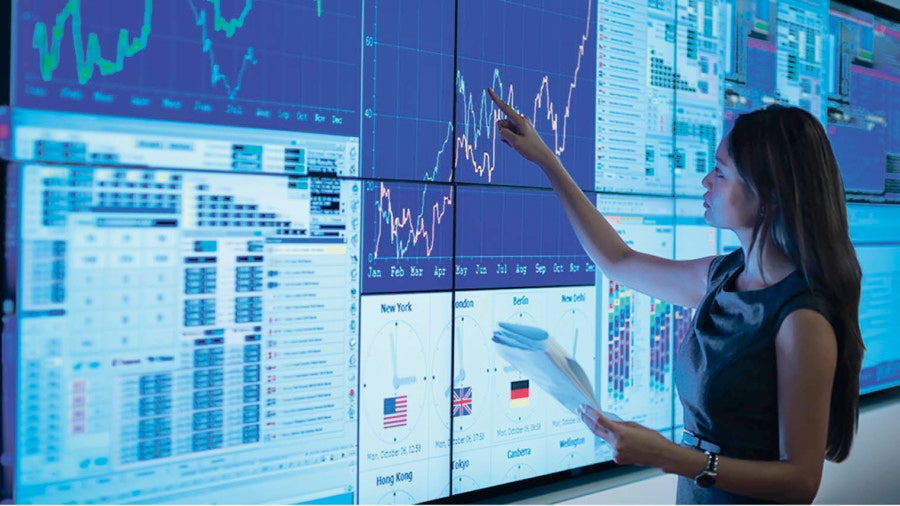 The internet of things (IoT) is now an essential driver for digital supply chains. As a live, visible network of smart objects and sensors, it changes dramatically how work is done.
The internet of things (IoT) is now an essential driver for digital supply chains. As a live, visible network of smart objects and sensors, it changes dramatically how work is done.
Firstly, the IoT transforms the consumer end of the chain – how people buy – through omnichannel sales and superfast shipment. Companies such as Amazon and Alibaba are able to deliver in one hour of order, and rely on the technology to move every item with accuracy and on time.
But the IoT is no longer exclusive to such giants. All companies are able to employ the technology as it becomes affordable and easy to manage. They too can capture the reality of fast delivery by using the information from items and pulling it into standard business processes.
Secondly, manufacturers are attempting to satisfy enormous consumer demand for personalisation and individualisation of products. The IoT is transforming production and delivery to improve customer satisfaction in this area.
Examples include running shoes that have insoles and structure specifically geared to an individual runner’s gait and foot shape. This is made possible by technology advances in big data for running analysis and in distributed manufacturing, with 3D printing of products in store or nearby.
The IoT helps keep such costs under control, effectively tracking material throughout the manufacturing process that may be spread over a series of “islands”. True connectivity and efficient processes enable the basis of product components, such as shoe walls, covers and laces, to be produced in different places, then made available to stores to assemble with their own 3D-printed insoles.
Thirdly, the way different companies collaborate is changing – a move empowered by the IoT. Businesses can connect with a range of different partners, directly from those manufacturing and assembling to those handling purchase orders, payment and finance, as well as asset and service management.
To do this effectively requires new models of business. Asset and service management need to be front and centre, ensuring machines are constantly up and running. Financial management has to be directly tied to order processing, responsive and predictive production, and distribution. The IoT can feed updates directly into all core processes between partners.

So what does the IoT-enabled digital supply chain look like? It relies on sensors across assets and goods, which transmit signals to core systems. This results in a massive amount of data being recorded and analysed every millisecond, and businesses need the right systems to understand it. The smartest businesses use this information in combination with machine-learning, which is also evermore affordable and simple, to enable evidence-based prediction of what will be needed, when and where.
At SAP, our IoT strategy focuses on this smart approach. We have introduced SAP Leonardo as a new brand for the IoT portfolio. SAP Leonardo connects things with people and processes to enable companies to innovate on business models, business processes and the way people work.
We see strong adoption across all industries and all regions of the world. There is a high awareness of the IoT as a core supply chain tool.
Supply chain specialists and consumer brand giants have set the example that is now possible for everyone. Companies such as Under Armour, adidas and Nike, and other apparel and footwear companies, were early to advance in individualising products and delivering them quickly.
The IoT is now becoming essential for predictive maintenance and asset management, saving unexpected maintenance costs and reducing downtime by more intelligently identifying devices that will need repair.
SAP Leonardo connects things with people and processes to enable companies to innovate on business models, business processes and the way people work
The technology can also help with scheduling and optimising the limited capacity and natural resources now available. The Hamburg Port Authority, which handles an enormous amount of traffic, takes the data from ships, trucks and cargo movement, and maps it into different potential schedules. This helps it recreate more efficient timing plans and increase the capacity of the port significantly.
For any business, such change with the IoT requires a well-thought strategy and entry point. In our company, we’ve introduced an SAP Leonardo jump-start programme to make it easier for organisations to conduct pilots and define a business case and IoT roadmap. The programme demonstrates the proven value that IoT can deliver when integrated into core business processes.
There are many exciting developments for the future, and to be ahead of the change SAP’s many global innovation labs operate with customers and partners collaborating on ideas.
From these shared ideas, we believe that in the long run the combination of IoT, machine-learning, and blockchain will be essential. Our vision is to provide an environment that enables people to anticipate and solve issues before they even happen, while transactions, such as confirming orders or making payments, will be completely automated.
As the momentum of innovation grows, collaboration must remain at the forefront. As a result, at SAP we are hosting our first Global IoT Summit this July in Frankfurt. Open to people from around the world, we will showcase the art of the possible now and look to the future of innovation.
The IoT is transforming the supply chain. It is essential that businesses make the change happen. Technology will differentiate them from their competitors in ensuring fast delivery, creating personalised and individualised items, and collaborating effectively with distributed partners.
To find out more about the internet of things visit http://www.sap.com/solution/internet-of-things.html
To see how you can transform your supply chain visit http://www.sap.com/solution/lob/supply-chain.html
 The internet of things (IoT) is now an essential driver for digital supply chains. As a live, visible network of smart objects and sensors, it changes dramatically how work is done.
The internet of things (IoT) is now an essential driver for digital supply chains. As a live, visible network of smart objects and sensors, it changes dramatically how work is done.
Firstly, the IoT transforms the consumer end of the chain – how people buy – through omnichannel sales and superfast shipment. Companies such as Amazon and Alibaba are able to deliver in one hour of order, and rely on the technology to move every item with accuracy and on time.
But the IoT is no longer exclusive to such giants. All companies are able to employ the technology as it becomes affordable and easy to manage. They too can capture the reality of fast delivery by using the information from items and pulling it into standard business processes.
Secondly, manufacturers are attempting to satisfy enormous consumer demand for personalisation and individualisation of products. The IoT is transforming production and delivery to improve customer satisfaction in this area.
